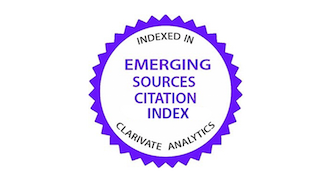Conservation of Deglet Nour variety dates in syrup form and study of their quality
DOI:
https://doi.org/10.15517/rhz23q56Keywords:
antioxidant, Phoenix dactylifera, preference, robb, sensometryAbstract
Introduction. Deglet Nour date syrup is gaining popularity due to its unique flavor and potential health benefits. Assessing its quality is crucial for both consumers and producers, as it directly influences its market value and health reputation. Objective. To evaluate the nutritional value, sensory quality, and antioxidant potential of Deglet Nour dates in syrup form. Materials and methods. The biological material was collected in Biskra, Algeria, in December 2019, during the maturation period of the plant material. To determine the various components of biological substances, quantitative analysis through color reactions was employed to measure total sugars, reducing sugars, non-reducing sugars, proteins, polyphenols, and flavonoids. The amounts of lipids and ash were recorded, and an atomic absorption spectrophotometer was applied to assess the variety of minerals. Testing for antioxidant activity was conducted through antiradical experiments. Furthermore, sensory evaluation included 45 individuals who assessed this syrup against others, concentrating on clarity, sweetness, and general flavor preference. Results. The chemical composition analysis revealed an average total sugar content (52 %), a moderate amount of protein (1.6 %), and low-fat content (0.09 %). The energy content was 215.6 kcal/100 g. The mineral analysis showed that the syrup is rich in essential minerals, particularly calcium, sodium, and magnesium. Flavonoids were identified as the predominant antioxidants, with anti-free radical activity estimated at 27.62 %. The sensory evaluation compared Deglet Nour syrup to Ghers and Degla-Beida varieties. The classification test showed that Deglet Nour syrup was perceived as the clearest. While it did not differ significantly in sweetness from Degla-Beida, it was preferred by tasters for its more pleasant taste. Conclusions. Dates of the Deglet Nour variety, which are highly sensitive to deterioration, yield after processing a natural syrup with the desired nutritional, therapeutic, and sensory properties.
Downloads
References
Ahmed, J., Al-Jasass, F.M., & Siddiq, M. (2013). Date fruit composition and nutrition. In M. Siddiq, S. M. Aleid, & A. A. Kader (Eds.), Dates: postharvest science, processing technology and health benefits (pp. 261-283). Wiley. https://doi.org/10.1002/9781118292419.ch11
Aleid, S. M., & Haddadin, J. S. (2023). Valorization and chemical constituents assessments of Khalas dates fruit, syrup and pits. Current Research in Nutrition and Food Science, RR11(1) ,77-87. https://doi.org/10.12944/CRNFSJ.11.1.5
Al-Mamary, M., Al-Habori, M., & Al-Zubairi, A. (2014). The in vitro antioxidant activity of different types of palm dates (Phoenix dactylifera) syrups. Arabian Journal of Chemistry, 7, 964-971. https://doi.org/10.1016/j.arabjc.2010.11.014
Al-Qarni, S. S. M. (2020). Correlation between amylase activity and reducing sugar content in date fruits: a case of increased amylase activity with proportional increase in reducing-sugar content of fruits. Journal of Nutrition and Food Science, 10, Article 767. https://doi.org/10.35248/2155-9600.20.10.1000767
Ardali, F. R., & Akbarian, M. (2014). The influence of date syrup on color, texture, and sensory properties of Gaz. Bulletin of Environmental Pharmacology and Life Sciences, 3(2), 159-163.
Barakat, H., & Alfheeaid, H. A. (2023). Date palm fruit (Phoenix dactylifera) and its promising potential in developing functional energy bars: Review of chemical, nutritional, functional, and sensory attributes. Nutrients, 15(9), Article 2134. https://doi.org/10.3390/nu15092134
Ben Mansour, R., Serairi-Béji, R., Ksouri, R., & Megdiche-Ksouri, W. (2022). Date palm “Deglet Nour” (Phoenix dactylifera) fruit extracts: functional components, antioxidant, anti-inflammatory activities and gastroprotective effect. Journal of Natural Product Research and Applications, 2(1), 12-29. https://journals.univ-tlemcen.dz/JNPRA/index.php/JNPRA/article/view/36
Benmeddour, Z., Mehiragic, E., Le Meurlay, D., & Louailache, H. (2013). Phenolic composition and antioxidant capacities of ten Algerian date (Phoenix dactylifera L.) cultivars: a comparative study. Journal of Functional Foods, 5, 346-354. http://dx.doi.org/10.1016%2Fj.jff.2012.11.005
Benouamane, O., Vergara-Barberan, M., Benaziza, A., García Alvarez-Coque, M., Simo-Alfonso, E., & China, B. (2022). Characterization of different cultivars of Algerian date palm (Phoenix dactylifera L.) leaves and pollen by comprehensive two-dimensional liquid chromatography of phenolic compounds extracted with different solvents. Microchemical Journal, 182, Article 107874. https://doi.org/10.1016/j.microc.2022.107874
Blama Merzaia, A. (2014, January). 17 date-producing wilayas: an inexhaustible wealth for Algeria. Le Monde des Dattes, 1, 16-19.
Bouhlali, E. D., Derouich, M., Meziani, R., Bourkhis, B., Filali-Zegzouti, Y., & Alem, C. (2020). Nutritional, mineral and organic acid composition of syrups produced from six Moroccan date fruit (Phoenix dactylifera L.) varieties. Journal of Food Composition and Analysis, 93, 1-25. https://doi.org/10.1016/j.jfca.2020.103591
Chidan Kumar, C. S., Mythily, R., Venkatachalapathy, R., & Chandraju, S. (2014). Biomimic conversion of Maida (polysaccharides) to reducing sugars by acid hydrolysis and its estimation using standard methods. International Food Research Journal, 21(2), 523-526.
Chouana, T., Kadri, M., Ben Khedda, N., & Ould El Hadj, M. D. (2019). Sirops (Robb) de deux variétés de dattes, Ghars et Deglet Nour comme substitut du sucre blanc dans la fabrication de deux types de bonbons (Loukoums et caramels). Algerian Journal of Arid Environment, 9(2), 66-79.
Doukani, K., & Tabak, S. (2015). Physicochemical profile of the fruit "Lendj" (Arbutus unedo L.). Journal Nature & Technologie, 12, 53-66.
Farahnaky, A., Mansoori, N., Majzoobi, M., & Badii, F. (2016). Physicochemical and sorption isotherm properties of date syrup powder: Antiplasticizing effect of maltodextrin. Food and Bioproducts Processing, 98, 133-141. https://doi.org/10.1016/j.fbp.2016.01.003
Guirrou, I., Charafeddine, K., Zain El Abidine, F., Khalid, D., & Younès, N. (2022). Impact du renforcement du couscous par des légumineuses alimentaires sur le profil biochimique et microbiologique. African & Mediterranean Journal - Al Awamia, 134, 129-149. https://doi.org/10.34874/IMIST.PRSM/afrimed-i134.31672
Jaouhari, Y., Disca, V., Ferreira-Santos, P., Alvaredo-López-Vizcaíno, A., Travaglia, F., Bordiga, M., & Locatelli, M. (2024). Valorization of date fruit (Phoenix dactylifera L.) as a potential functional food and ingredient: Characterization of fiber, oligosaccharides, and antioxidant polyphenols. Molecules, 29 (19), Article 4606. https://doi.org/10.3390/molecules29194606
Jean Constant, K. K., Justin, S. S., Kouassi Loh, Y. G. A., Tehi Bernard, S. T., & Kouame, P. L. (2020). Potentialites physicochimiques des fèves de cacao des variétés “Mercedes” et “Théobroma cacao” des régions du Lôh-Djiboua et de l’Indénié-Djuablin (Côte d’Ivoire). International Journal of Advanced Research, 8 (5), 1178-1186. http://dx.doi.org/10.21474/IJAR01/11031
Kadum, H., Hamid, A., Abas, F., Ramli, N. S., Mohammed, A. K. S., & Muhialdin, B. J. (2018). Applications of date (Phoenix Dactylifera L.) fruits as bioactive ingredients in functional foods. Journal of Pure and Applied Microbiology, 12(3), 1101-1108. https://doi.org/10.22207/JPAM.12.3.08
Lagha-Benamrouche, S. (2021). Étude comparative de l’influence de la désamérisation par le sel sur la qualité sensorielle de deux confitures: bigarade et pamplemousse. Revue Nature et Technologie, 13(2), 74-84. https://www.asjp.cerist.dz/en/Articles/47
Lagha-Benamrouche, S., Banaissa, T., & Sadoudi, R. (2018). Desamerization of bitter jam: biochemical and sensory quality. Journal of Food Quality, 2, Article 8178059. https://doi.org/10.1155/2018/8178059
Lagha-Benamrouche, S., & Benkaci, Z. (2022). Influence of desamerization on the quality of a jam based on grapefruit. Iranian Journal of Chemistry and Chemical Engineering, 40(1), 109-120. https://doi.org/10.30492/IJCCE.2020.117382.3830
Lagha-Benamrouche, S., Boudjema, K., Djeziri, M., & Rezgui, W. (2021). Effect of adding cocoa powder on the quality of milk and its antioxidant potential. International Journal of Food Science and Nutrition, 6(4), 127-133. http://www.foodsciencejournal.com/archives/2021/vol6/issue4/6-4-26
Lagha-Benamrouche, S., Boudjema, K., Rezgui, W., Djeziri, M., & Hezil, D. (2023). Valorization of carob seeds as a functional food. Carpathian Journal of Food Science and Technology, 15(1), 5-14. https://doi.org/10.34302/crpjfst/2023.15.1.1
Liu, B., Xin, Q., Zhang, M., Chen, J., Lu, Q., Zhou, X., Li, X., Zhang, W., Feng, W., Pei, H., & Sun, J. (2022). Research progress on mango post-harvest ripening physiology and the regulatory technologies. Foods, 12(1), Article 173. https://doi.org/10.3390/foods12010173
Mut, Z., Kardeş, Y. M., & Erbaş Köse, Ö. D. (2022). Determining the grain yield and nutritional composition of maize cultivars in different growing groups. Turkish Journal of Field Crops, 27(1), 158-166. https://doi.org/10.17557/tjfc.1107691
Seddiki, L. S., & Seddiki, S. (2023). Propriétés physicochimiques, microbiologiques et antioxydantes de sirop de datte de la région du sud-ouest d’Algérie. Nutrition & Santé, 12(2), 80-89. https://doi.org/10.30952/ns.12.2.4
Siddiqi, S. A., Rahman, S., Khan, M. M., Rafiq, S., Inayat, A., Khurram, M. S., Seerangurayar, T., & Jamil, F. (2020). Potential of dates (Phoenix dactylifera L.) as natural antioxidant source and functional food for healthy diet. Science of the Total Environment, 748, Article 141234. https://doi.org/10.1016/j.scitotenv.2020.141234
Downloads
Published
License
Copyright (c) 2025 Samira Lagha-Benamrouche, Djamila Hezil (Autor/a)

This work is licensed under a Creative Commons Attribution-NonCommercial-NoDerivatives 4.0 International License.
1. Proposed policy for open access journals
Authors who publish in this journal accept the following conditions:
a. Authors retain the copyright and assign to the journal the right to the first publication, with the work registered under the attribution, non-commercial and no-derivative license from Creative Commons, which allows third parties to use what has been published as long as they mention the authorship of the work and upon first publication in this journal, the work may not be used for commercial purposes and the publications may not be used to remix, transform or create another work.
b. Authors may enter into additional independent contractual arrangements for the non-exclusive distribution of the version of the article published in this journal (e.g., including it in an institutional repository or publishing it in a book) provided that they clearly indicate that the work was first published in this journal.
c. Authors are permitted and encouraged to publish their work on the Internet (e.g. on institutional or personal pages) before and during the review and publication process, as it may lead to productive exchanges and faster and wider dissemination of published work (see The Effect of Open Access).































